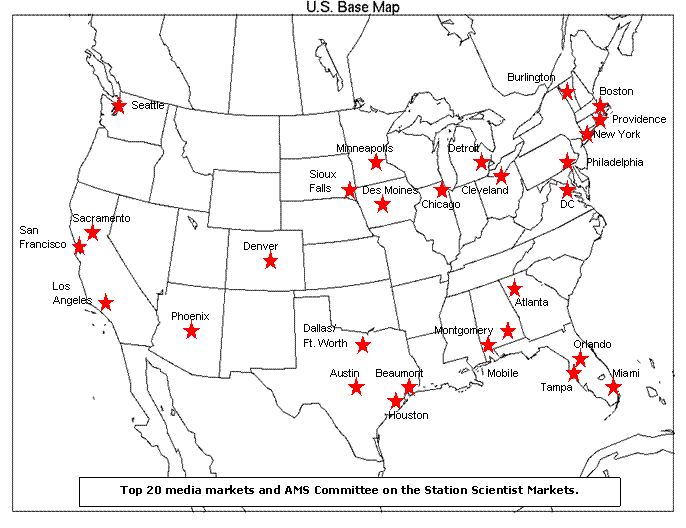An Environmental Information Service
Television and radio weathercasts are the most popular news item in any media market – nearly 80 percent of viewers report that getting up-to-date on the weather is the primary reason they watch the local news. This means that when Americans are watching their local weather report, they are in a “learning mode.” And, they watch the weather reports repeatedly, thus greatly improving the impact of education information. Because broadcast meteorologists routinely convey complex scientific information about the Earth and the atmosphere to their viewers, the local weather report provides a unique opportunity to bridge the environmental information gap by also conveying important environmental information that is relevant to people’s daily lives.
To foster the dissemination of environmental information on air, The National Environmental Education & Training Foundation (NEETF) created Earth Gauge™, a free environmental information service targeted at television and radio weathercasters in the 20 largest U.S. media markets, and distributed in partnership to the American Meteorological Society’s 1,300 Broadcast Seal Holders. Earth Gauge™ is designed to make it easy for weathercasters to explain the environmental implications of weather events, and what viewers can do to help address those implications.
How Earth Gauge™ Works
A trained Earth Gauge™ researcher looks up the 3-5 day weather forecast in each of the 20 major media markets.
Based on the approaching weather, a brief, tailored message along with a relevant and striking graphic is e-mailed to the broadcasters in each market.
The Earth Gauge™ environmental message is a logical and natural continuation of the weather forecast. See the examples to the left.
 Earth Gauge™ Focus Markets
Earth Gauge™ Focus Markets
Eyes on the Environment
Earth Gauge™ is part of a larger initiative of NEETF and the American Meteorological Society (AMS), called Eyes on the Environment. Eyes on the Environment is designed to provide broadcast meteorologists with core environmental content that can be easily conveyed to their viewers. We tested the concept in February 2002 in Washington, DC, at WRC-TV with Chief Meteorologist Bob Ryan. Working with StormCenter Communications, we developed a comprehensive Web site, http://wrc.iewatershed.com, about the Chesapeake Bay Watershed – Watersheds: Where the Atmosphere Meets the Earth. The Web site was embedded in WRC-TV’s Web site, and served as a source of background information for on-air stories mentioned by the weather team. Based on the success of the WRC-TV pilot, StormCenter Communications expanded the project to five other markets: Philadelphia, PA, Minneapolis, MN, Austin, TX, Montgomery, AL, and Mobile, AL.
To ensure meteorologists have the training they need on the connections between weather and the environment, a series of online courses for broadcast meteorologists are being developed, covering such content as environmental science fundamentals, how environmental processes work, how to link fundamental concepts to topics currently covered on the air, and how to easily explain environmental concepts to the public. Developed in cooperation with the National Center for Atmospheric Research’s Cooperative Program for Meteorology, Education, and Training (COMET), the first online course will focus on watersheds, and will support a larger effort by AMS to actually require environmental education as part of its continuing certification rules for broadcasters.